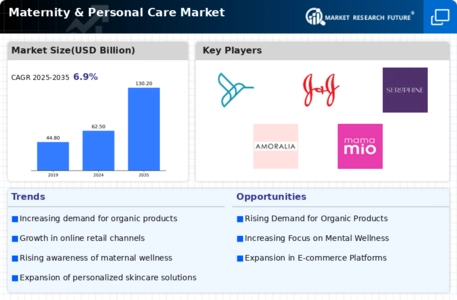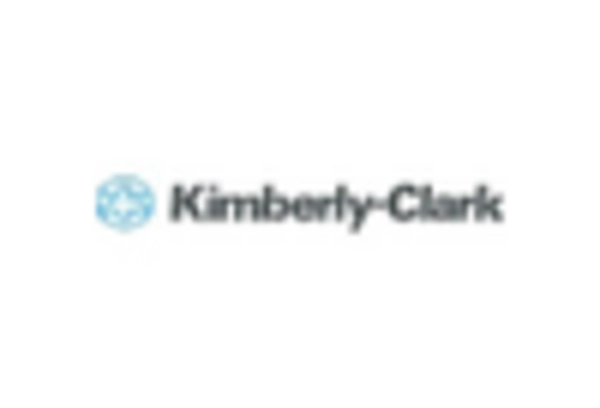Market Share
Maternity & Personal Care Market Share Analysis
The maternity personal care market is witnessing notable trends driven by evolving consumer preferences and growing awareness of the importance of maternal health and wellness. One prominent trend is the increasing demand for natural and organic products among expectant mothers. Concerns about exposure to harmful chemicals and toxins have led pregnant women to seek out skincare, haircare, and personal care products formulated with safe and natural ingredients. Brands that prioritize transparency and sustainability in their manufacturing processes are gaining traction in this segment, as consumers prioritize products that are not only safe for themselves but also for their developing babies.
Another significant trend in the maternity personal care market is the rise of personalized skincare solutions tailored to the unique needs of pregnant and postpartum women. As every pregnancy is different, expectant mothers are looking for customizable products that address specific concerns such as stretch marks, hormonal changes, and sensitive skin. Brands offering personalized consultations or diagnostic tools to assess individual skincare needs are gaining popularity, as they provide a more personalized and effective approach to maternal skincare.
Furthermore, inclusivity and diversity have become key drivers of market trends in the maternity personal care sector. With increasing representation and awareness of diverse body types and skin tones, there is a growing demand for products that cater to a wide range of maternal experiences and identities. Brands that embrace diversity in their marketing campaigns, product offerings, and shade ranges are resonating with a more diverse consumer base and gaining market share in the maternity personal care segment.
Additionally, the digitalization of the maternity personal care shopping experience is shaping market trends in this industry. Expectant mothers are turning to online platforms and e-commerce channels to research, discover, and purchase maternity personal care products conveniently from the comfort of their homes. Social media influencers and online communities dedicated to maternal health and wellness are also influencing purchasing decisions, as they provide product recommendations, reviews, and support to pregnant and postpartum women navigating their skincare journey.
Moreover, sustainability and eco-consciousness have emerged as significant considerations for consumers in the maternity personal care market. As awareness of environmental issues grows, expectant mothers are seeking out brands that prioritize eco-friendly packaging, cruelty-free practices, and sustainable sourcing of ingredients. Products labeled as "clean," "green," or "eco-friendly" are increasingly preferred by environmentally conscious consumers who want to minimize their ecological footprint while prioritizing their personal health and well-being during pregnancy.
Furthermore, the COVID-19 pandemic has accelerated certain market trends in the maternity personal care sector. With heightened concerns about health and hygiene, there has been a surge in demand for products that offer antibacterial and antiviral properties, such as hand sanitizers, body washes, and sanitizing wipes formulated specifically for pregnant and postpartum women. Additionally, the shift towards remote work and virtual healthcare appointments has led to increased interest in telemedicine and online consultations for maternal skincare concerns, driving digital innovation in the industry.

















Leave a Comment